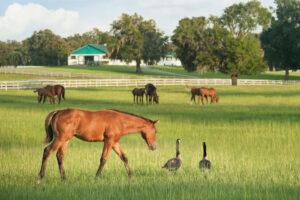The Art of R&R
It has taken months of preparation for this moment. You’ve done the roadwork, marched your horse up and down hills, put in miles on the training track, added the speed and agility sessions, plugged in that heart rate monitor, and assessed your horse’s growing fitness by the numbers and by feel. And the hard work and dedication you’ve put into it have paid off–your horse just successfully
- Topics: Article
It has taken months of preparation for this moment. You’ve done the roadwork, marched your horse up and down hills, put in miles on the training track, added the speed and agility sessions, plugged in that heart rate monitor, and assessed your horse’s growing fitness by the numbers and by feel. And the hard work and dedication you’ve put into it have paid off–your horse just successfully completed the big event you’d been aiming him for all those months, and he has come out of it with four good legs and nary a scratch elsewhere.
Now what?
Most people who train for high-performance events–be they eventing, endurance, polo, reining, combined driving, racing, etc.–agree that horses benefit from some quality down time after a maximum effort. The British call it “roughing off,” and they schedule it for the end of the foxhunting season when their mounts get turned out on grass and aren’t touched with an item of tack for at least a month or two. Most upper-level event horses receive similar treatment after the completion of a three-day event. Racehorses generally get briefer reprieves, unless an injury forces an extended rest–a week or two on pasture and they’re back in training before they start to lose fitness and focus.
What’s the real benefit of “letting down” a performance horse, and what’s the best way to go about it? Do you just go from hours of daily training directly to pasture potato? Or is there a smarter, safer way to schedule recovery time? We talked to trainers in three different disciplines to get their perspectives
Create a free account with TheHorse.com to view this content.
TheHorse.com is home to thousands of free articles about horse health care. In order to access some of our exclusive free content, you must be signed into TheHorse.com.
Start your free account today!
Already have an account?
and continue reading.
Related Articles
Stay on top of the most recent Horse Health news with
















